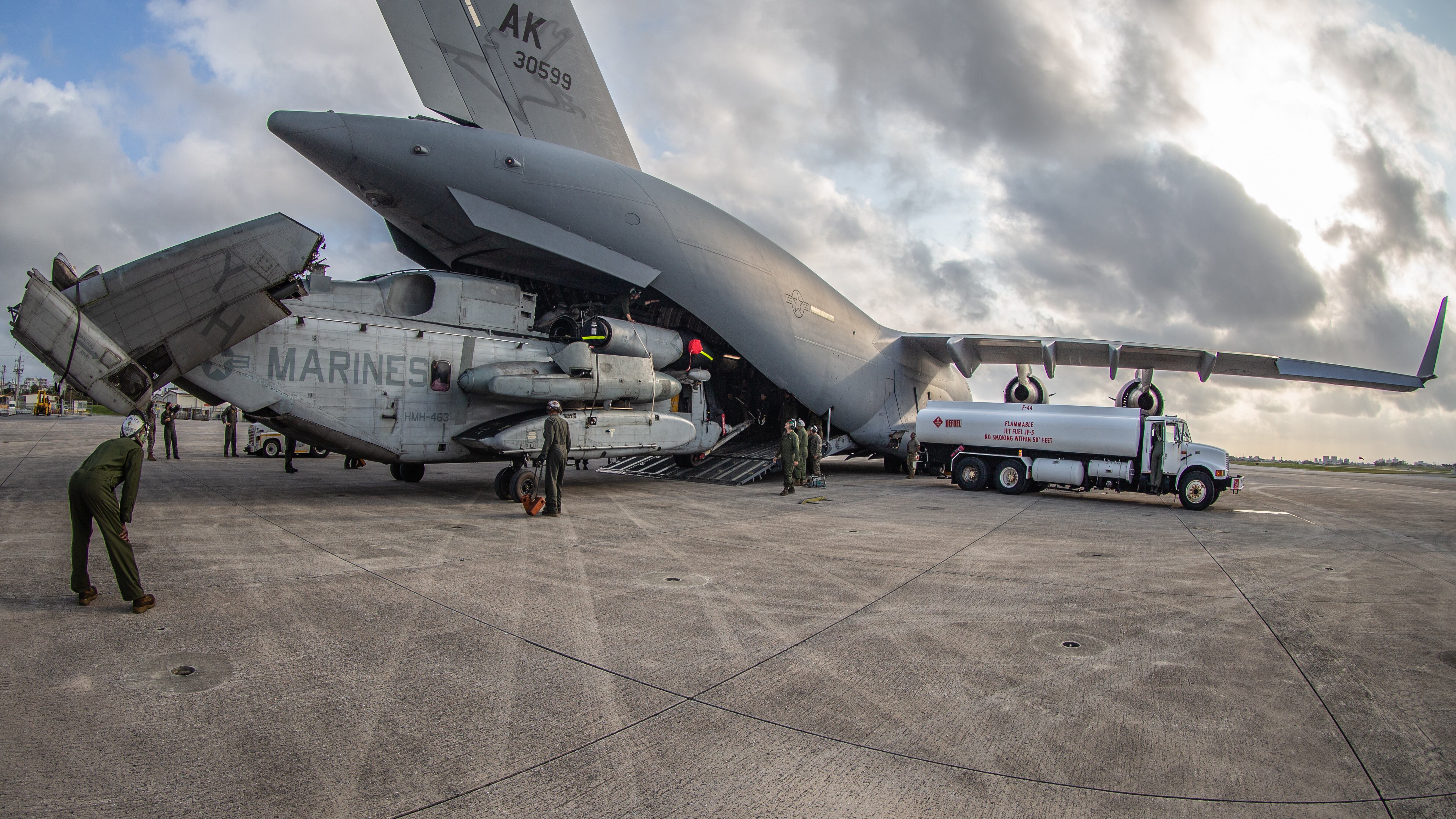While most Marines are no strangers to hard field training, for Marines in one Okinawa, Japan, based squadron, simply getting to the training may have been the hardest part.
On July 15, six UH-1Y Venoms assigned to Marine Light Attack Helicopter Squadron 169, currently attached the 1st Marine Air Wing, took off from Okinawa and conducted a 1,200-mile trip to Naval Air Facility Misawa, Japan.
The trip was the longest maritime trip made by the squadron that anyone involved in the planning or execution process can remember, Maj. Kenneth Kunze, a spokesman for the 1st Marine Air Wing, told Marine Corps Times in an email.
Lt. Col. Eric Fleming, the squadron’s commander, said in a press release, “It proves that we can range any adversary in the Pacific theater and conduct missions such as command & control, close air support, deep air support, and aerial reconnaissance with expeditionary and distributed sustainment support.”
RELATED

The flight was made in support of exercise tiltrotor/rotary wing (TR/RW) 2107, but more importantly it demonstrated the Corps’ ability to move helicopters long distances across the Pacific Ocean, a key in the Corps’ new fighting plans.
The Corps is currently redesigning itself to faceoff against near-peer threats.
As part of its plan the Corps is preparing to a fight a distributed battle with small units of highly skilled and heavily armed Marines deployed to expeditionary advanced bases spread across islands in the Pacific.
While the plan makes the Marines a significantly harder target for any enemy to knock out, it also makes it significantly more difficult for the Corps to supply and provide air support to these spread-out Marines.
Training exercises like this recent one are being used to work out how the Corps will provide the necessary support.
“The significance of self-deploying HMLA-169 over 1,200 miles demonstrates our ability to execute Distributed Maritime Operations under the Expeditionary Advanced Base Operations (EABO) construct,” Fleming said in the release.
The helicopters were loaded with auxiliary fuel tanks and accompanied by three AH-1Z Vipers, four MV-22 Ospreys and three additional Venoms from supporting squadrons for the trip, Fleming told Marine Corps Times in an email.
While on the flight the aircraft made multiple refueling stops at various U.S. and Japanese air bases on the route, he added.
The longest continuous stretch over water was 300 miles from the northern edged of Okinawa to Kyushu, on the southernmost of Japan’s five main islands, Fleming said in the email.
All the aircraft that left successfully completed the trip, an improvement from when the Corps attempted the same trip two years ago.
During that trip the helicopters made it as far as Atsugi, Japan, just outside of Tokyo, before bad weather forced them to turn around, Fleming said.
The Corps expects to repeat the trip in the future with other helicopter squadrons deployed to Okinawa, Fleming said.




